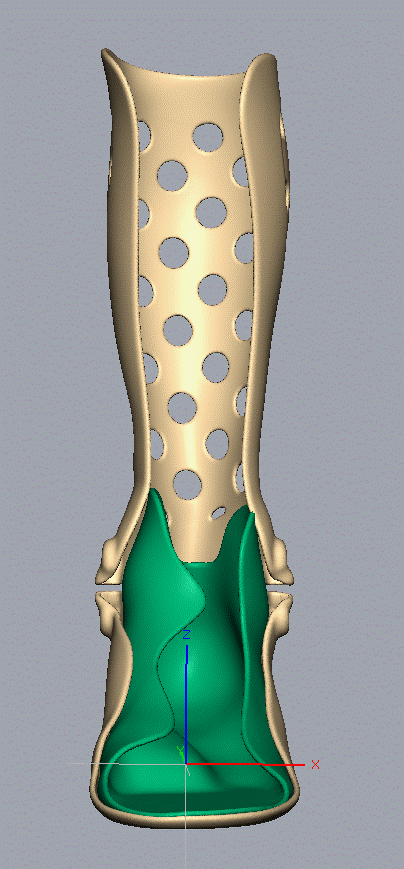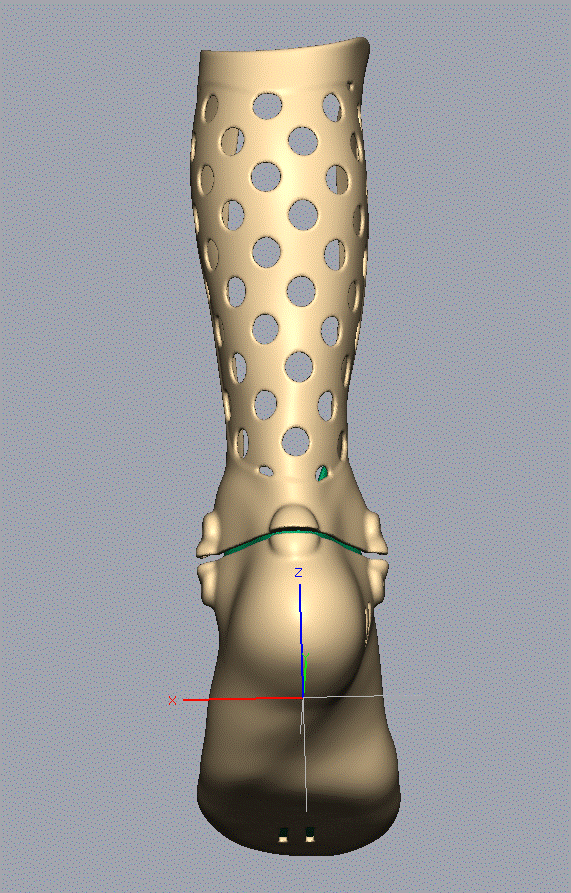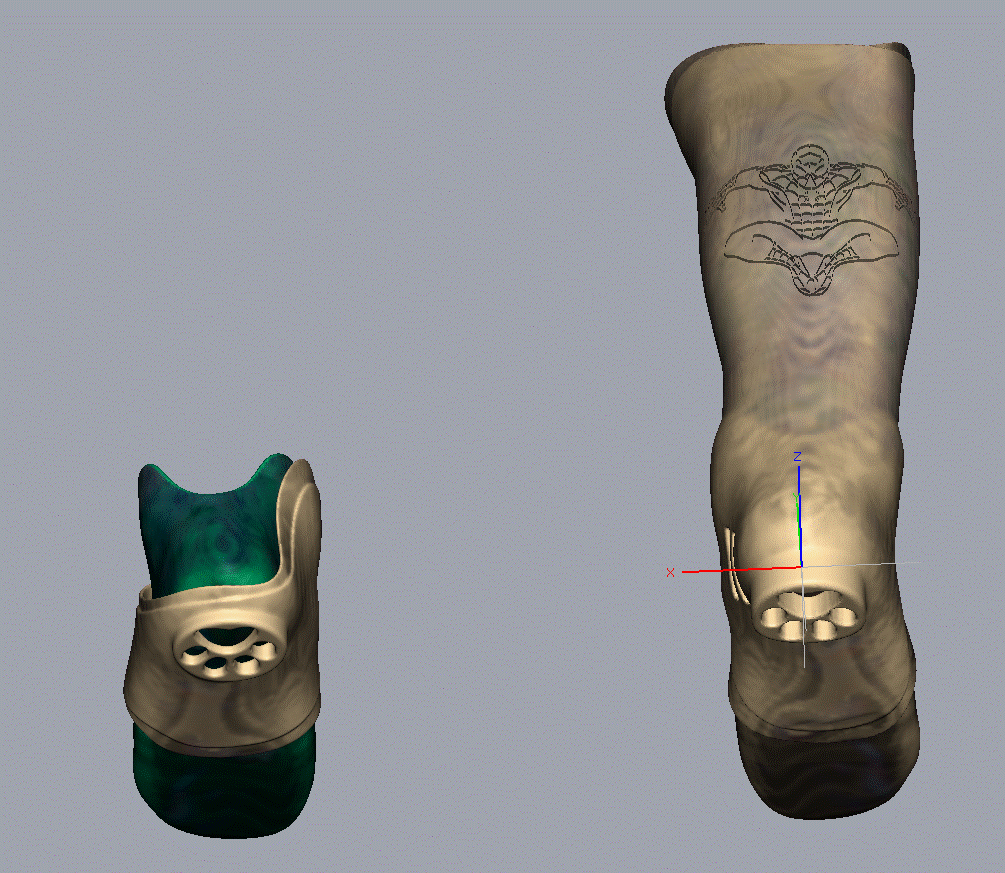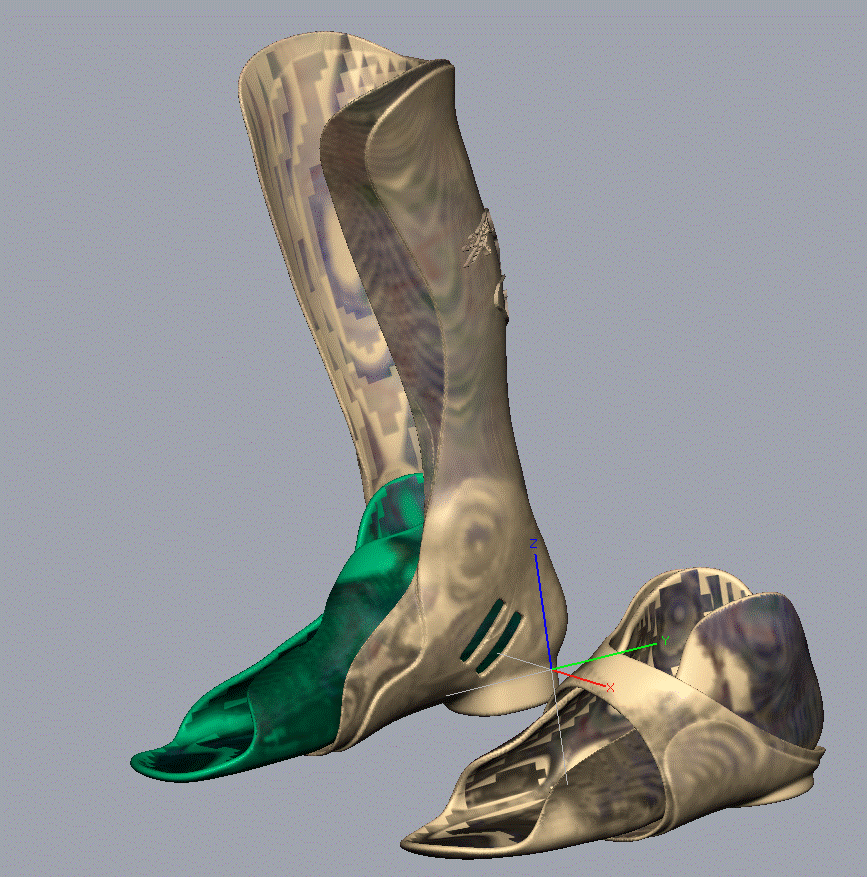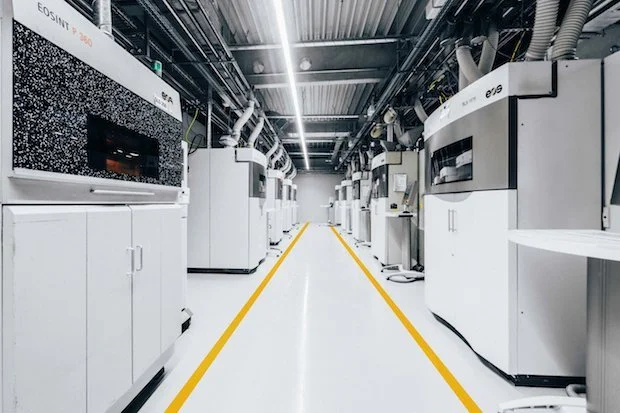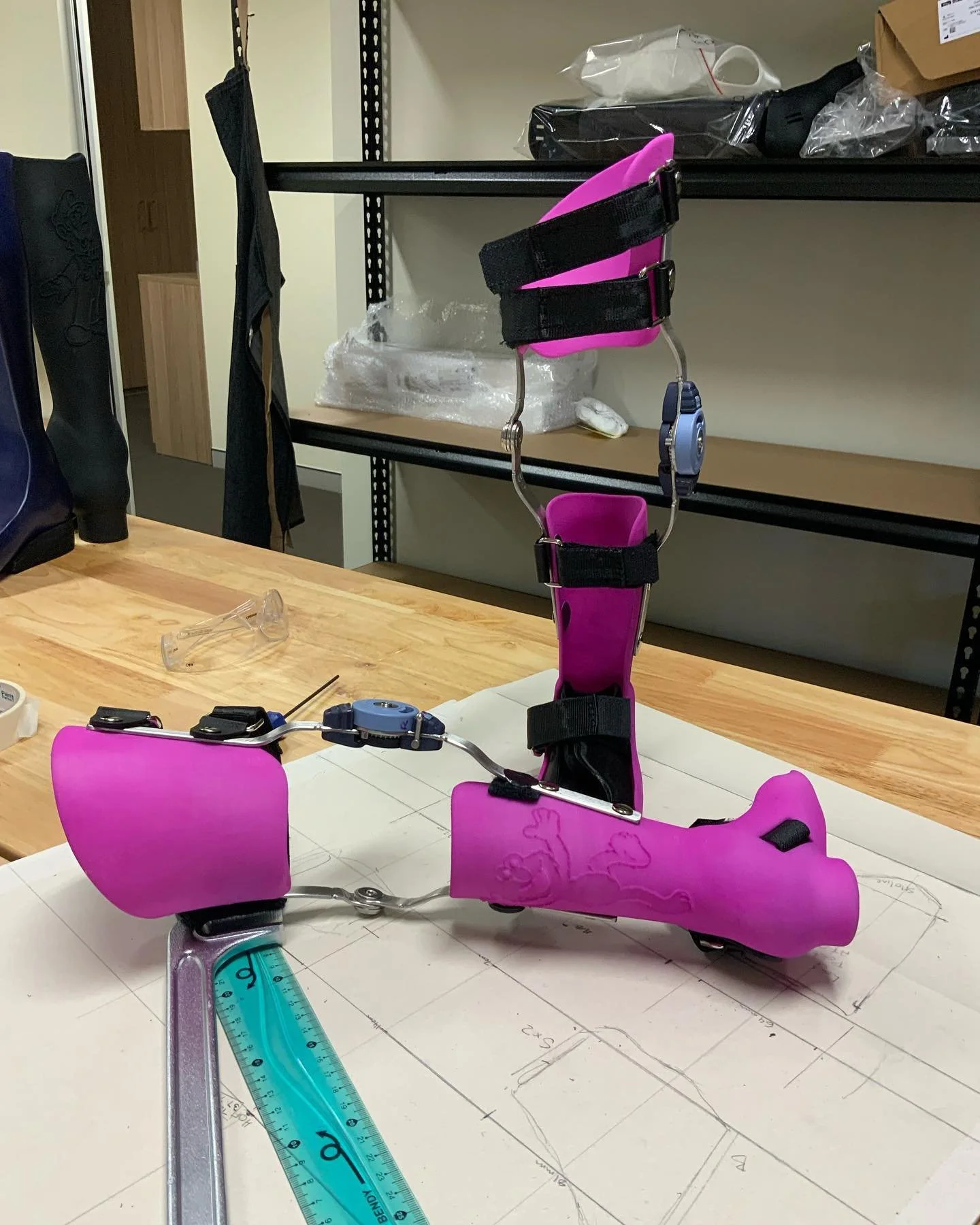3D Modeling
Access Orthotics is an innovator and leader in 3D-designed orthotic care.
Each digital cast is aligned to a client’s unique prescription by our qualified orthotist prosthetist clinicians using Geomagic freeform and a touch-haptic device. We then hand 3D model pockets of cushioning, areas of stiffness or flexibility, and specific functional trim lines that are all designed and saved as your “digital prescription”. The orthoses STL files are saved within your patient records and 3D printed either in-house or sent to specific printing bureaus. As a clinic, we continuously seek to improve the design and function of your specific orthoses - for your specific needs.
A review of your progress and outcome measures can be captured with our BTS vector gait lab. The produced report informs fine-tuning your current or future orthotic prescriptions. Finite element analysis (FEA) linking the vector gait outcomes with your 3D modeled orthoses, allows us to review your outcome measures and replicate or improve your orthotic prescription and design.
As you can see, we are passionate and purposeful in our 3D modeling and design.
There are so many different ways to 3D print and so many different materials to use. It is vital to purposefully choose the right combination of material and printing option for the design requirements of each clients particular orthosis. Our rigid orthoses (AFOs, Helmets, KAFOs, WHO…) are made on large industrial laser printers and powder fill. We choose the most appropriate printing bureau for your specific orthosis, and the mechanical properties required. Our flexible orthoses are printed in-house (or milled). We have six printers (10 heads) buzzing away in our clinic.
Below is a brief overview of a few printer and material combinations and why we chose them. Please feel confident in the guidance our clinicians offer you, we are leaders in this space.
3D Printing
Flexible cushioned SMOs. Flexible thin PE SMOs have been utilized within AFOs for many years to control transverse and coronal alignment. Our design adds to this concept with built-in pockets of soft support for positioning of ankle (STJ) and arches, controlling forefoot positioning and protection from ataxic movements. The padding is purposefully designed by our clinicians and the density of infill/ shore/ and filament options are chosen for each client’s prescription. They are also an easily modified and printed element of an orthotic prescription that allows for fine-tuning of fit, or replacement.
Material: filament TPU, Shore 78-92, infill giro 10-40%, colour options
Printer: Creator3 V2 or Prusa BEAR MK3S (Access Orthotics)
Night resting or Long Low Load stretching ROM AFOs. These are non-weight-bearing orthoses, and can be designed with features of comfort as opposed to impact strength. Ventilation holes are designed into the calf section, with hinged housings and extension stops. (it is important for a stretching ROM AFO to be custom-made if an ankle ëscapes” into pronation or supination when loaded)
Material: Nylon, PA12 (Black)
Printer: Hewlett-Packard Multi Jet Fusion (iOrthotics Queensland)
3D-modelled AFOs with integrated heel and forefoot posting. Designed as thin and light as possible (in relation to function and safety).
We model/print your chosen picture on the back of single-colour AFOs. Or you can choose from limited full-colour designs.
Material: Nylon, PA11 (White and Died) or PA12 full colour
Printer: Selective laser sintering (SLS) with tumbler finish and sealing (Serkel, Melbourne) or Hewlett-Packard JET FUSION 500 with Chemical Vapor Smoothing (AbilityMade, printed in America)
Workshop
It’s Making time!!
As orthotists, we are makers at heart and this shows through in our detailed orthoses. We have a full orthotic workshop on premises at our Wollongong clinic. Here all the elements come together. Orthoses are unpacked from printing, or draping, or laminating. The SMOs are buffed and fitted to your 3D designed AFO. Components (joints/struts) are aligned and integrated into orthoses. Straps are sewn (even rainbow options) and riveted in place. Glitter is sprayed, shoes are measured, socks are allocated, all ready for your fitting appointment.
Grinders, buffers, sewing machines, heat-guns, and drills are all on hand for repairs and adjustments when you come to clinic.
Polypropylene and Carbon Fibre
There are “currently” still economic limits to the size and height we can 3D print in Australia. For our taller clients, we combine old and new technology to create hybrid AFOs. We 3D scan, 3D model, 3D print padded SMOs - and send our combined STL file to be 3D carved. Your orthosis is then made using traditional processes of draping sheet polypropylene or laminating carbon fibre. Heel pitch and alignment is made with EVA posting. All the elements still come together beautifully. Tamra still loves polypropene… but she’s old school :)
Prefabricated Options
We offer a large range of prefabricated orthoses for trial within our clinic. For some clients, this is the ideal combination of being lightweight, when minimal control is needed. The different brands offer different properties of stiffness, design, and gait outcomes.

